|
|
FUGUE:
CHAPTER VIb
THE
ORGAN AS REBUILT BY J.
J. BINNS IN 1905
The
arrangement of the stop knobs on the 1905 console, presumably as
selected by T. Cawthra and as executed by J. J. Binns, did not
altogether follow the traditional pattern in the sequence of the
speaking stops, whilst the placing of the groups of stops was at
variance with the normal practice today. The Pedal Organ stops
were placed on the right-hand jamb, as was customary at the time
since they were operated together with the Great Organ stops by
the combination action. It is now generally agreed that the
Pedal Organ stops should be on the left-hand side, as now
placed.
In
the following specification and analysis of the pipes of the
organ, the stops of each department are listed as grouped in the
traditional manner used by Schulze, commencing with the 16ft. rank
in each manual department. The arrangement of the manual
stops as planted on the wind chests is shown separately. In the
case of the Swell and Echo Organs, the sequence of the ranks of
pipes corresponds exactly with that of the original stop knobs
(see end of Page 4), and in the case of the Echo Organ with
the sequence on the Binns console. The sequence of stops on
the Choir Organ windchest is however reversed, with the bulky
pipes of the Lieblich Bordun at the front and the Clarinette at
the back, although the pipes are arranged semitonally as in the
adjacent Echo Organ. This may have arisen owing to the fact
that the Choir Organ was a late addition to the instrument when
space was restricted.
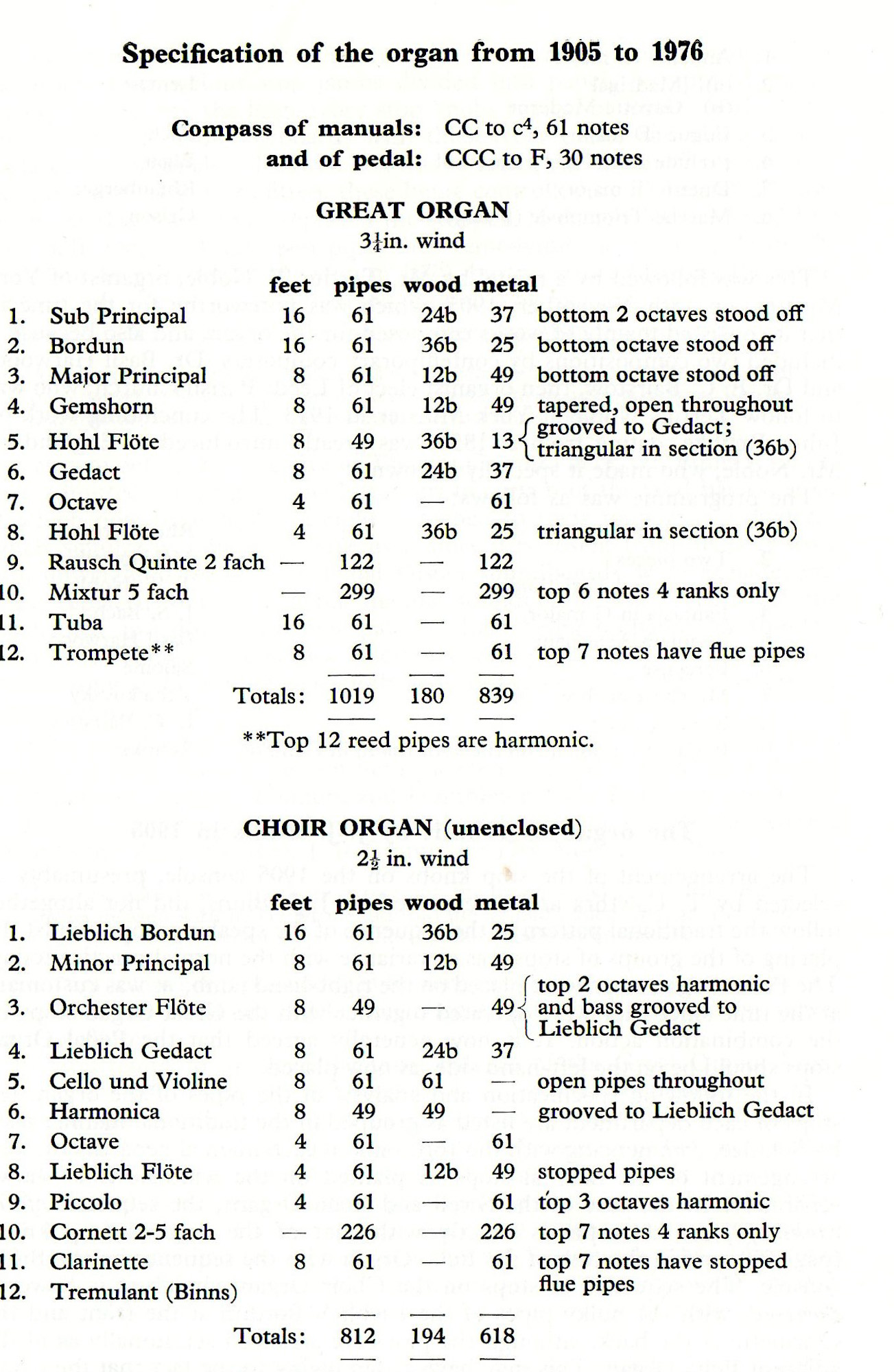
|
|

|
N.B.
the suffix “b” indicates that the lower
octaves
are of wood.
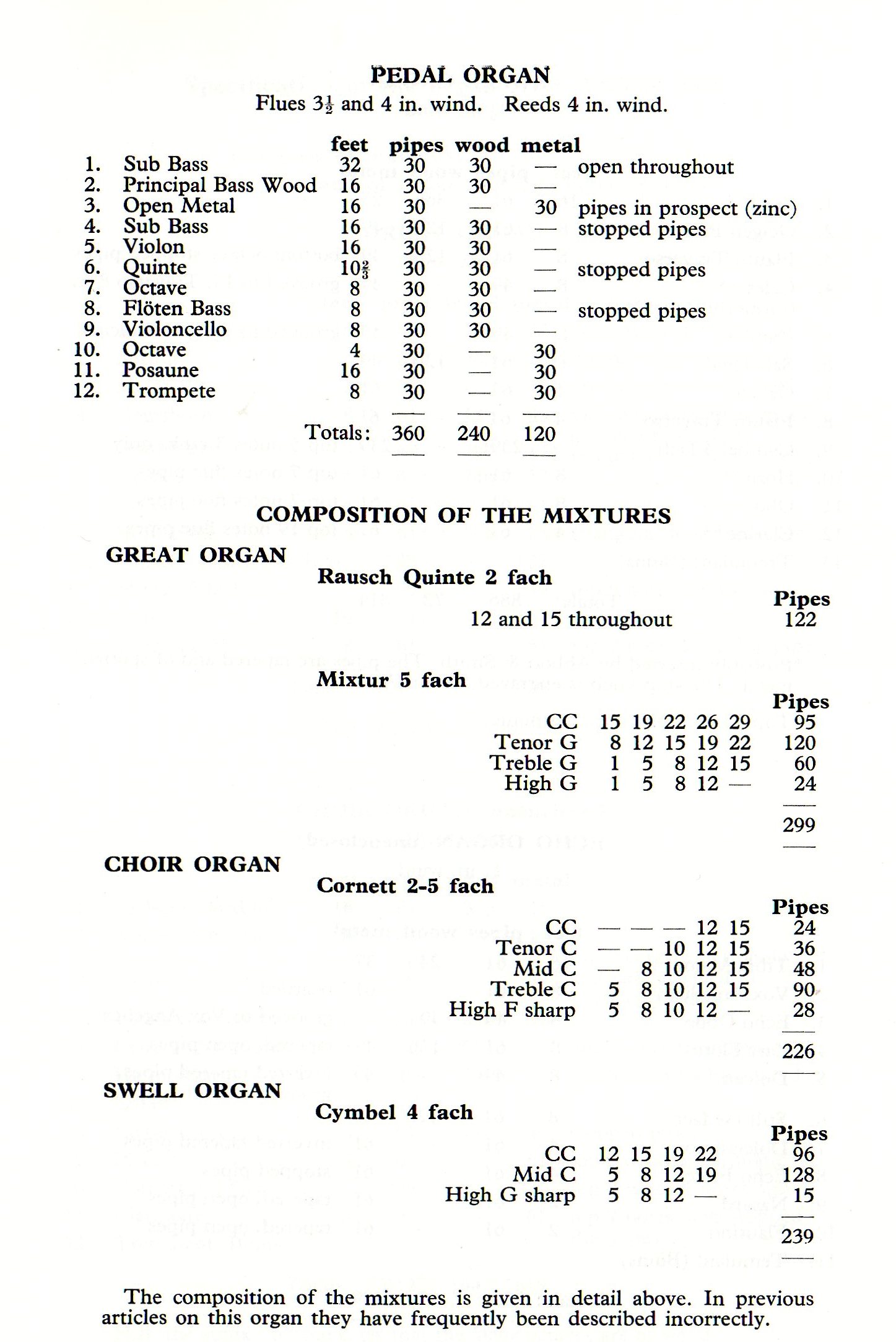
|
|
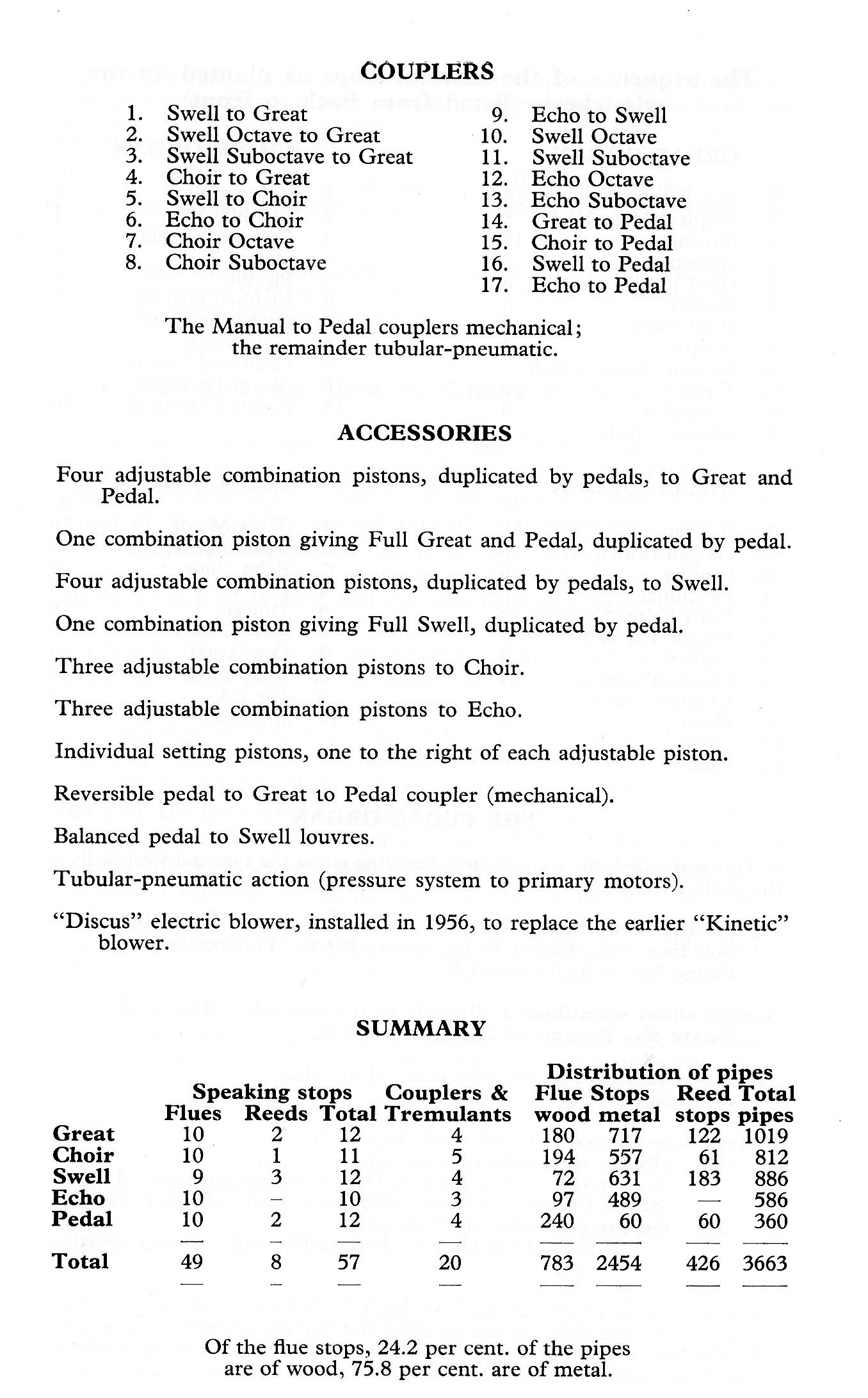
|
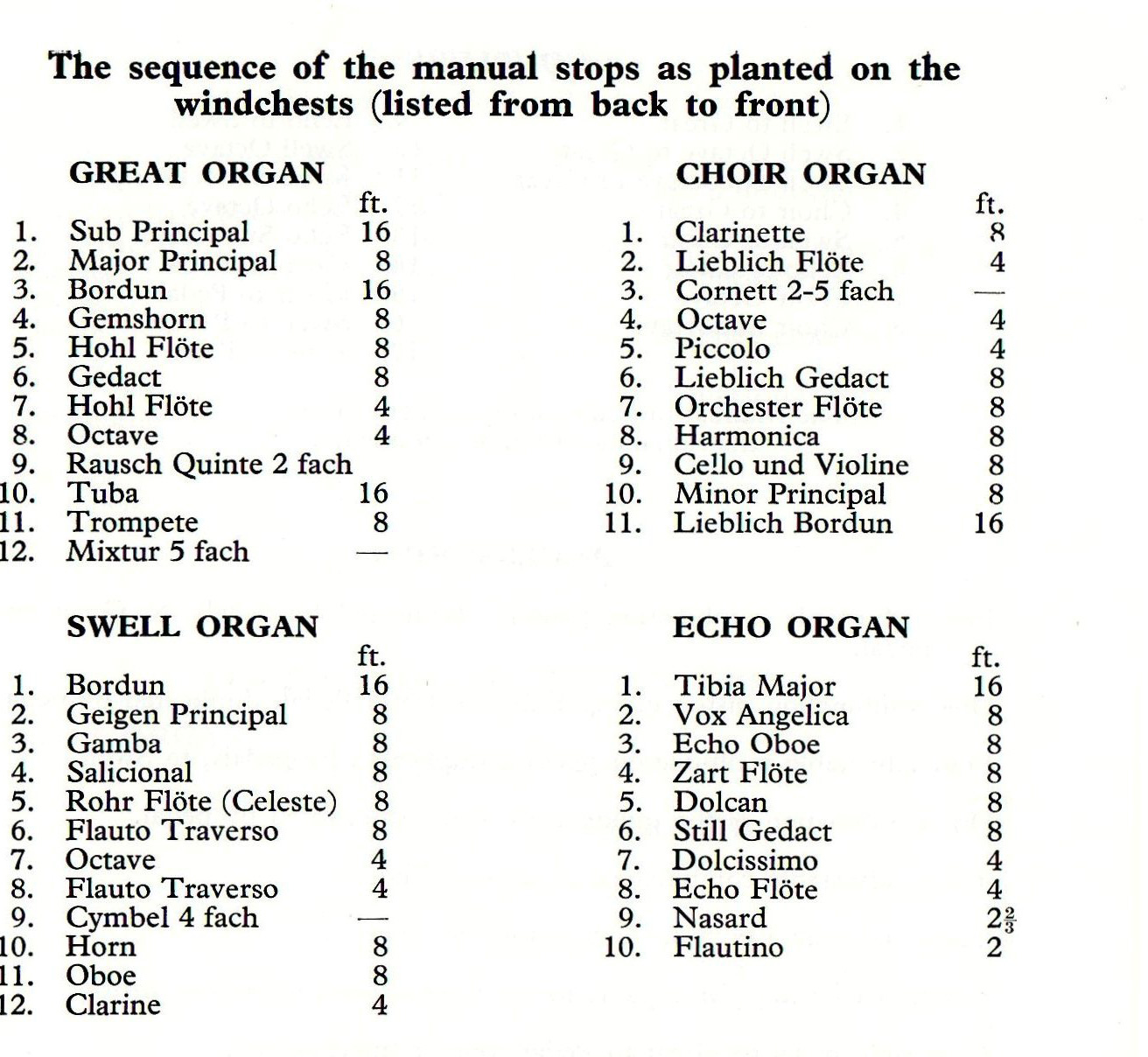
|
PEDAL
ORGAN
The
Open Metal 16ft. of the Pedal Organ is mounted in the organ
case and wind is conveyanced
from a separate soundboard behind the main front provided by
Binns in 1905 on
4 inches wind.
The
remaining Pedal Organ stops are divided and arranged along the
east and west walls of the North Transept:
East
side: —
from the wall towards the centre (31/2
inches wind):
Sub Bass 32ft. -23 pipes from GGGGsharp to
FF and one non-speaking end pipe next to the FF pipe.
NOTE:
The dumb pipe is probably the original FF pipe, mislaid by
workmen in 1879 but subsequently ‘found’ and
retained in the Organ.
At the Binns 1905 rebuild this pipe
was presumably placed in its
present position, thus
displacing the series and making it necessary to
mount the
new CCCC pipe on a separate small chest on the west side of the
Transept. (31/2 inches wind): Octave 4ft; Violoncello 8ft;
Quinte 10%ft; Violon 16ft; Sub Bass 16ft; Floten
Bass 8ft.
West
side: — from
the wall towards the centre
(4
inches wind): Sub Bass 32ft. — 7 pipes from CCCCsharp to
GGGG on one soundboard and CCCC pipe [Binns 1905] on a small
individual chest; Principal Bass 16ft; Octave 8ft;
Posaune 16ft; Trompete
8ft.
|
The
Materials used by Schulze in the Organ
Examination
of metal pipes by various organ-builders has yielded interesting
results both as regards the tone produced and the durability of
the alloy used. Analyses published in 1909 by Major George Dixon
showed that the proportion of tin used by the seventeenth and
eighteenth century century organ builders in England ranged from
10.3 to 100 per cent! Schulze used 56 per cent. tin
with 44 per cent. lead in the resonators of a reed stop (probably
the Posaune 16ft.) now at Armley, and the same firm used 49 per
cent. tin with 51 per cent. lead in the Piccolo 4ft. stop of the
smaller instrument built for St. Peter's Church, Harrogate, as
described previously. These proportions are very similar to those
used by two other famous organ builders of the nineteenth century
- Henry Willis I used 50 per cent. tin for the Clarion at Durham
Cathedral in 1877 and Thomas C. Lewis used 47 per cent. tin for a
Diapason at Newcastle-upon-Tyne Cathedral in 1890. Boner and
Newman, the physicists, found that of the materials they tested, a
fifty-fifty alloy of tin and lead gave the best reinforcement of
the first seven harmonics of a note, these being essential for
good diapason tone, whilst wood came second best. The Schulze
pipes at Armley have withstood tuning and cleaning operations well
for over a century, including cone tuning for the first 50 years
until tuning slides were fitted in 1921.
J.
F. Schulze & Sons did not always make their own pipes. The
Rev. J. H. Burn describes the building of the great Schulze organ
at Doncaster Parish Church thus:
|

|
|
In
the case of the Meanwood organ, Messrs. Schulze wrote to Kennedy
on 12th September, 1868:
‘The
second load will follow next week – mechanism, swell box,
etc.- and soon after that the pipes in a third load. (author’s
italics)
When,
however, the two additional Pedal stops were ordered for the organ
at Armley, it is possible that the facilities in the "rustic
building with a small water-wheel, little more than a roomy
carpenter's shop" were inadequate for the production of a
16ft. Open Metal speaking front and that these zinc pipes were
made elsewhere in Germany, or even in England, to Schulze's
specification.
The
high proportion of wooden pipes at Armley (24.2 per cent. if the
reed stops are excluded) is partly accounted for by the marked
preference shown by Schulze for wood as the best material for the
bass octave of many otherwise metal stops, including the 8ft.
Principals, and for two bass octaves of the Great Sub Principal
16ft., which he explained in a letter of 6th October, 1866, to
Kennedy. In this choice, Schulze may also have been influenced by
the more ready availability of timber in the "green heart"
of Germany, although the covering of certain wooden pipes with
blue paper, as though to conceal knots, and the appearance of the
larger pipes of the Sub Bass 32ft. stop, make it difficult to
believe that straight-grained timber was in abundance! Indeed the
workmanship of the wooden pipes appears crude in many cases when
compared with that of Schulze's contemporaries in England, as may
be seen in the illustrations of the pipe mouths -
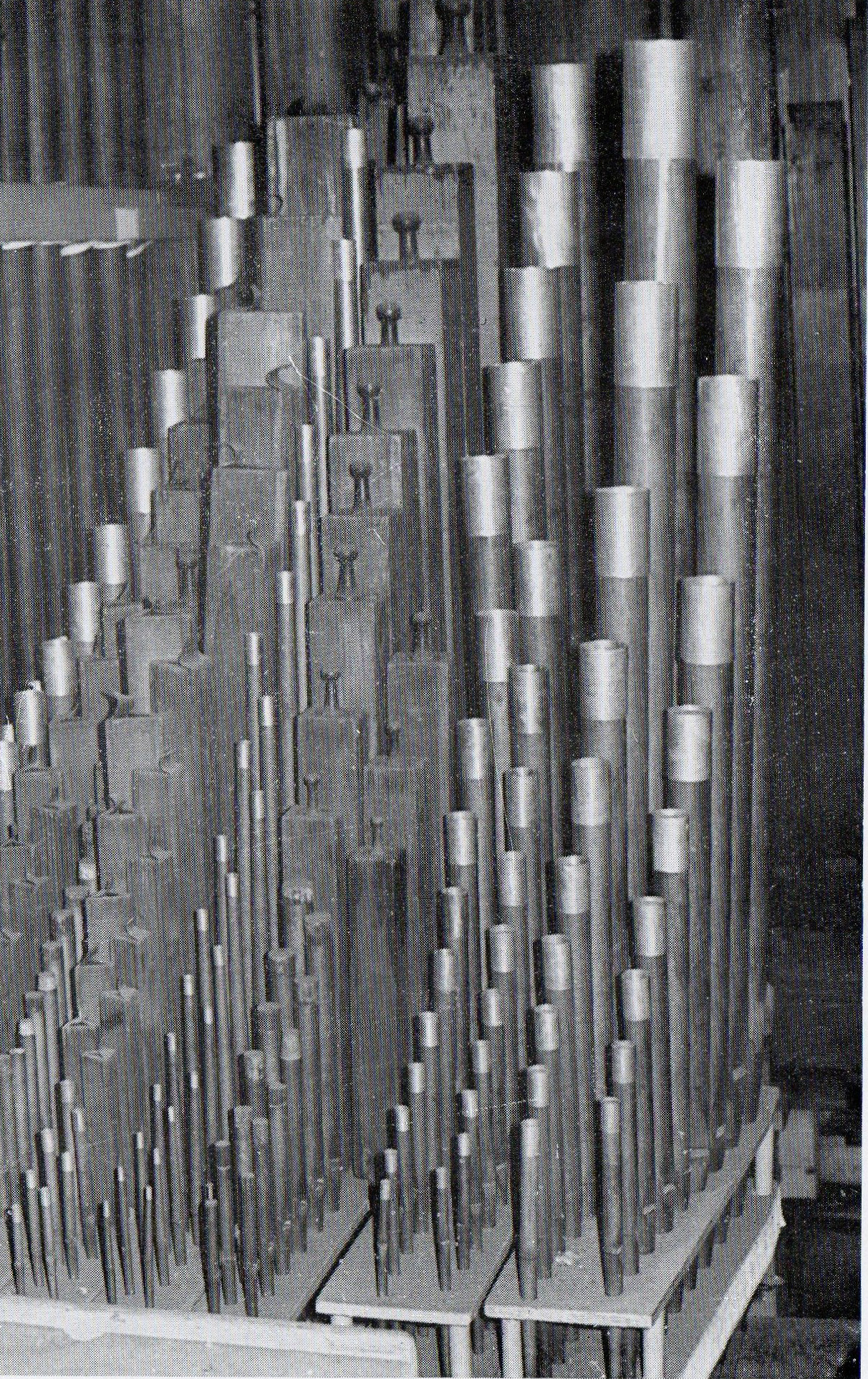
|
1.
Left.
Feet and mouths of the top C, D and E pipes of the
Pedal Organ Flõten Bass.
Note the wedges
at
the left sides of the mouths.
|
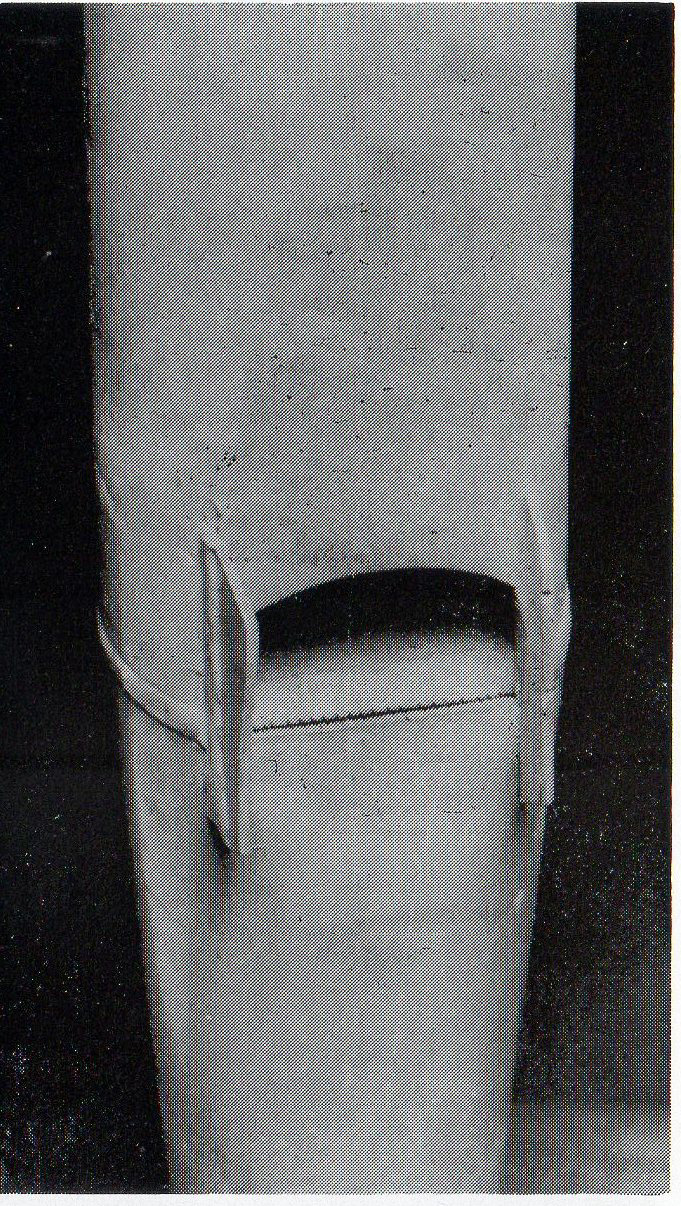
|
2.
Left.
Mouth of middle
C pipe of Choir
Organ
(Cello and
Violine)
|
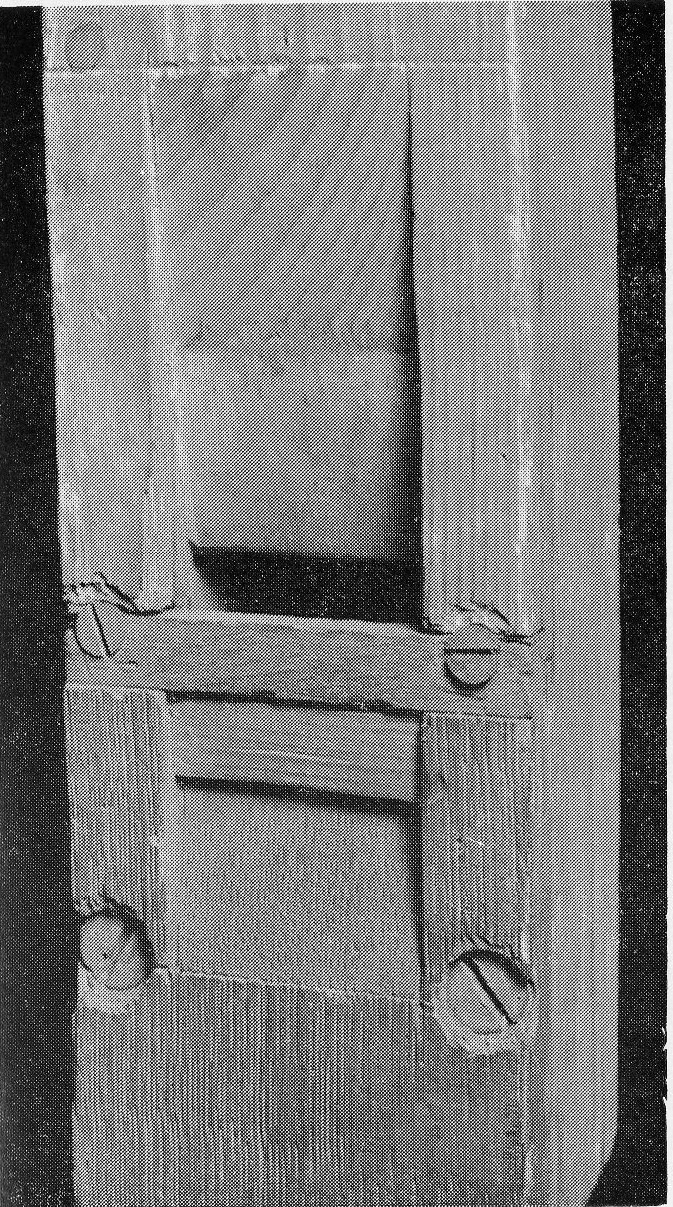
|
3.
Left.
Mouth of middle C
pipe of Pedal
Organ
(Violoncello)
|
-
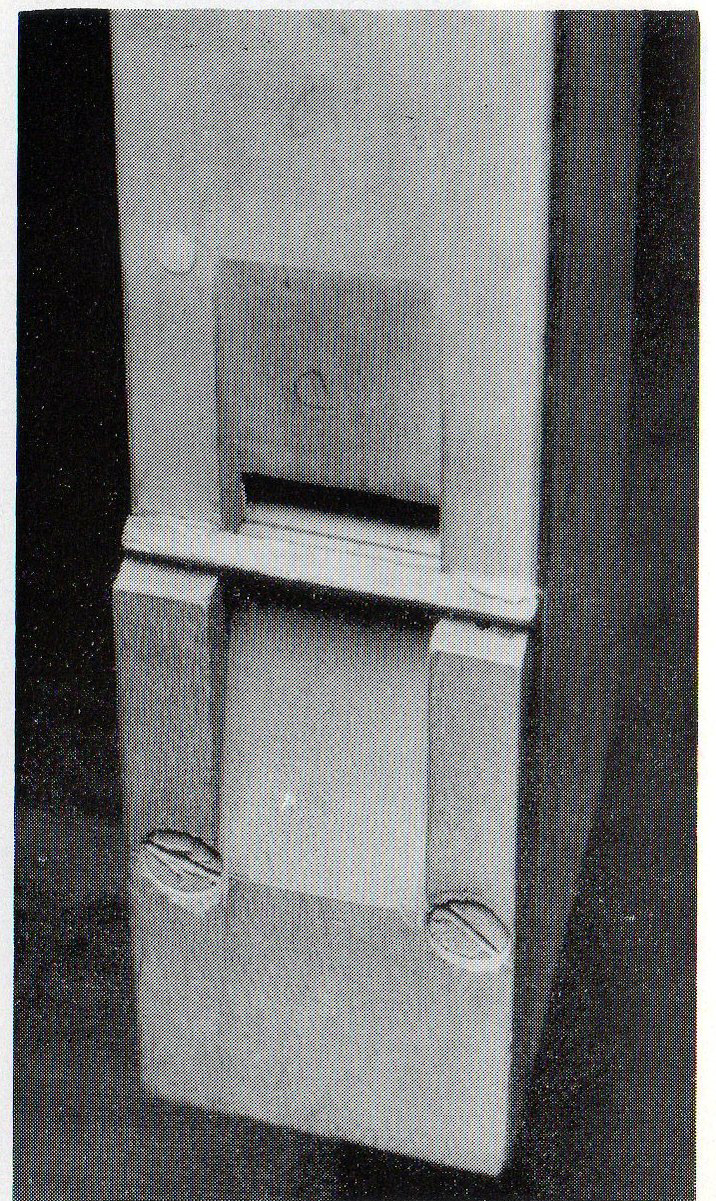
|
4.
Mouth of middle C pipe
of Echo Organ (Oboe)
|
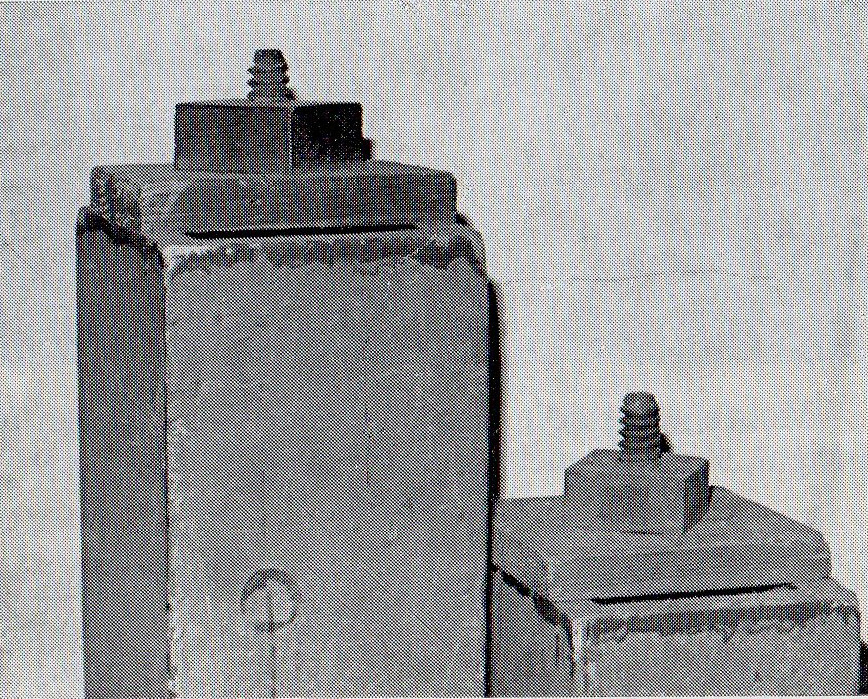
|
5.
Wooden screws and
nuts used by Schulze to operate
the tuning
stoppers of the bass
pipes Choir Organ
(Lieblich Bordum)
|
On
the other hand the treatment of the mouths of pipes of the Echo
Oboe (4 above) must have been a most delicate and tedious
operation. Some of the Bordun pipes show evidence of the Schulze
ingenuity in being fitted with wooden screws and nuts for
adjustment of the tuning stoppers, (see
5 above).
It
is known from Allbutt's reminiscences that Edmund Schulze insisted
on the use of well-seasoned timber throughout his instruments,
including the frames carrying the water engines and feeders, for
which he suggested ten year-old oak, since "raw wood anywhere
affects the tone." Wooden screws were also used by
Schulze to retain the faceboards of the windchests, some of which
are still in use. It is certain that the well-built and spacious
slider soundboards play a major part in the production of the
beautiful tone of the Principal chorus, as has been shown by the
work of Bonavia-Hunt in his attempts to reproduce the Schulze tone
elsewhere, and it is most fortunate that these have been preserved
at Armley.
|
|
|

